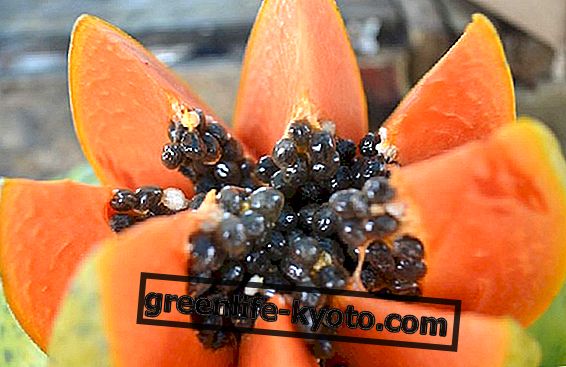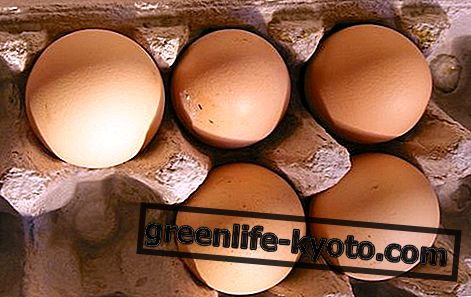
Garlic is a bulbous plant native to Asian lands but grows well in many climates of the world.
In fact, the cultivation of garlic is simple and is usually one of the products that beginners in horticulture begin to grow, obtaining a lot of satisfaction in the summer when harvesting the bulbs.
The garlic plant
With the word garlic we immediately think of the bulb composed of segments that are usually white in color and that we use in the kitchen and which has a strong, pungent and penetrating odor.
The garlic plant that is grown develops this bulb underground and from it grow long green leaves with an aromatic smell.
From the leaves at the end of spring a flower stem emerges that blooms in a spherical inflorescence of white or pink with purple shades .
The leaves and flowers, even if less known, are edible and can be used in the kitchen to make a dish particularly interesting thanks to their intense and at the same time more delicate aroma than the garlic bulb itself.
There are many varieties of cultivated garlic and there are wild ones that grow spontaneously throughout Italy; some are so special in color and aroma that they have been recognized as typical traditional products such as red garlic from Sulmona and pink garlic from Naples and other varieties are preserved and safeguarded to maintain garlic biodiversity .

Natural insecticides: here is how to do them
Growing garlic: from sowing to harvesting
To cultivate the garlic it is necessary to get the cloves of garlic or cloves and plant them immediately below ground level by putting the apex - which will form the bud - upwards.
Both in pots and in the open field, garlic grows well and is usually spaced 10 centimeters between the plants and 35 between the rows.
The temperature that allows the sprouting of the garlic is between 15 and 18 degrees, therefore from the moment of planting to the development of the plant it can take several days precisely because the winter temperatures could still be low due to its germination.
In the vegetable garden but also on the balcony it is recommended to combine garlic with other plants and in particular salad, carrots, fennel, strawberries, radishes and cabbage, to allow the protection of plants from attacks by harmful insects thanks to its strong aroma, repellent and unwelcome.
The optimal period for planting garlic is during the winter season from November to February and the best growing temperature is between 18 and 23 degrees.
It is harvested some months after planting, roughly around July when the leaves of the plant begin to dry out and the vegetative period of the plant ends.
For harvesting it will be sufficient to uproot the plant being careful that the entire bulb comes out without damage and cleans it from the earth. Traditionally braids of garlic were created, kept hanging in a dry, well-ventilated and sheltered from the light to allow drying to be completed and to keep the garlic in the house for a few months.
How to grow garlic: soil and irrigation
Garlic has no particular cultivation requirements, however it prefers dry and loose soils in order to better develop the roots and make the underground bulb swell which is the part of the plant most used for food purposes.
The only warning to keep in the growth of garlic is the risk of formation of water stagnation that can create moisture and make fungal diseases proliferate or soften the bulb.
For this reason the watering should not be abundant and the best solution and cultivate in a loose and well-drained soil that will help to develop the garlic bulb in the best way.
The only moments in which watering is needed are when the garlic is implanted so that there is enough water for the first development of the plant and then later at the time of harvest, in which it can happen that the plant blooms: a good watering helps to further develop the underlying bulb. At all other times, watering can also be absent, so much so that garlic tolerates drought very well.
As far as the growth temperatures of garlic are concerned, we can say that it does not fear the cold so much that it tolerates even a few degrees below zero and is a very resistant plant even in arid, dry and hot climates.













